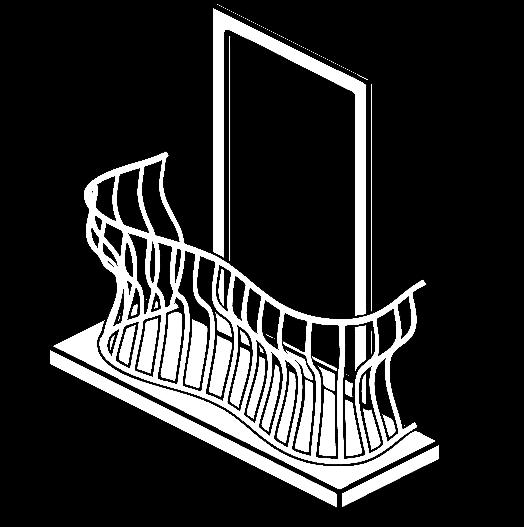
7 minute read
Important Legislative Updates for 2020 By Tim Flanagan, Esq.
Important Legislative Updates for 2020 By Tim Flanagan, Esq. FEATURE

This new law establishes criteria for inspection and investigation of exterior load-bearing components of buildings in common interest developments (“CIDs”) to probe for possible structural safety-related issues. Although inspections are not required until January 1, 2025, this new section of the Civil Code will immediately affect how CIDs approach inspections of components and will increase exposure to liability to CIDs if they fail to act with due care.
As you may recall, a balcony inspection bill was passed last year for all buildings with three or more multifamily dwelling units—condos and apartments. Condos were ultimately “carved out” of the bill before passage. SB 326 is the new version of this bill written specifically to address condos. The goal of these balcony inspection bills is the same, they both require that balconies and other exterior elevated load bearing components be inspected by professionals regularly. However, the inspection requirements are different. The details of this new “balcony bill” are discussed below.
SB 326 (now Civil Code Section 5551), requires that a statistically significant number of balconies and other exterior elevated components that the Association has repair and maintenance responsibility for must be visually inspected by a licensed civil or structural engineer or architect. This new law applies to CIDs with three or more units. For buildings now in existence, the first inspections must be completed by January 1, 2025.
To have a better understanding of this, the bolded phrases are discussed in more detail below:
Balconies and other exterior components
Balconies and other exterior components are defined as load bearing components that extend beyond the exterior walls of the building, are over six feet above ground level, are designed for human occupancy/use, and include: decks, balconies, stairways, walkways, and railings.
Visual inspection
The visual inspection performed by a licensed structural engineer or architect requires much more than just having one professional walk around the building(s) and look to see if the balconies or other exterior components appear to be structurally unsound. Under this law, a visual inspection means that the load bearing component itself needs to be inspected. Often, a load bearing component may be covered by a soffit, stucco or other building materials and inspection of these components may require techniques or equipment that allow for a “visual inspection” underneath the covering. This inspection may be accomplished through the use of moisture meters, borescopes, or infrared technology. And depending on the outcome of these inspections, even more intrusive inspections including destructive testing may be necessary to determine the safety of a component. Thus, the “visual inspection” in this new law is nothing like the visual inspection performed by a reserve specialist.
Statistically significant number
Technically, a statistically significant number is “a sufficient number of units inspected to provide 95 percent confidence that the results from the sample are reflective of the whole, with a margin of error of no greater than plus or minus 5 percent.” Unfortunately, and unlike last year’s bill, this is not an objective standard, and it leaves the determination of the number of components that need to be inspected up to the person performing the inspections, whose professional reputation and license may be affected if they inspect too few. THE BALCONY BILL SB 326: the addition of Civil Code Section 5551

Questions you may have:
• When do we have to start these inspections? Although the law does not require that the first inspection is completed until January 1, 2025, implementing this inspection protocol will take some pre-planning and budgeting to ensure that the Association has the funds necessary to have the inspections performed and complete any necessary repairs.
• How much will this cost? There is no easy answer to this question, it will depend not only on the age and condition of the building(s), but also on the number of different samples required and the determinations made by the structural engineer or architect the Association retains to perform the inspections.
Association action:
1. START NOW!
2. Find a licensed civil or structural engineer or architect to perform an initial, “informal” inspection to identify issues that may need to be addressed before January 1, 2025 to give the Association a preliminary indication of what the first inspection under this statute will require.
3. Incorporate the inspection information obtained from the inspector into the Association’s reserve study.
4. Build reserves as necessary to fund both the inspections and the repairs and/or replacement of load-bearing components identified by the inspections.
5. During the first required inspection that must be completed by January 1, 2025, the inspector must do the following: a. Generate a random list of the locations of each type of exterior elevated element (“element”) that will be used for the first inspection and all future inspections. b. Perform a “visual inspection” of a statistically significant sample, which may include the use of moisture meters, borescopes, or infrared technology, to determine if the components are in a generally safe condition. The samples should be sufficient to ensure that the results of the inspection reflect the whole. c. If the waterproofing system of an element has been compromised, determine if further inspection is necessary. d. Issue a written report of specific findings after the inspection has been completed.
6. Incorporate information from the inspector’s report as to the condition and life of the components into the Association’s reserve study.
7. Immediately address any immediate threats to health and safety identified by the inspector. These inspections must be repeated every nine years, and reports shall be maintained by the Association for two inspection cycles.
These new sections of the Civil Code prohibit Association governing documents from prohibiting the display of religious items on the entry door or entry door frame of a member’s separate interest. These religious items are items that the member desires to display due to “sincerely held religious beliefs” and are subject to certain requirements.
For those new buildings that have applied for building permits after January 1, 2020, the first inspection shall occur within six years after the certificate of occupancy is issued.

SB 326 Anti-Branches (Requirements before filing construction defect litigation - the addition of Civil Code Section 5986, and an amendment to Civil Code Section 6150.)
The “anti-Branches” portion of SB 326 is very positive for Associations. It adds Civil Code Section 5986 and amends Civil Code Section 6150. Branches is the commonly used name for a recent case in California that enforced “poison pill” provisions in an Association’s governing documents. These provisions made it extremely difficult for an Association to file a construction defect lawsuit.
These new sections of the Civil Code nullify provisions in governing documents that impose preconditions or limitations on a board’s authority to commence legal action against a declarant, developer, or builder of a common interest development. However, membership notice of a meeting regarding the potential of filing a construction defect lawsuit is required within thirty days before filing a lawsuit. These Civil Code sections are retroactive, so they are effective against these “poison pill” provisions in governing documents recorded before January 1, 2020. And if the Association cannot fulfill the notice requirement before filing a lawsuit due to statute of limitations issues, the notice may be given within thirty days after the lawsuit has been filed.
Association action:
Review the Association’s governing documents for provisions regarding necessary actions before filing a lawsuit. If the Association is considering filing a construction defect lawsuit, ensure that the membership notice and meeting requirements of Civil Code Sections 5986 and 6150 are followed and notice is given to membership promptly at least thirty days before filing the lawsuit. If there are statute of limitations issues that do not allow the Association to give thirty days’ notice to members, ensure this notice is given within thirty days after the lawsuit is filed.

THE DISPLAY OF RELIGIOUS ITEMS BILL SB 652: the addition of Civil Code Sections 1940.45 and 4706
Establish new rules regarding the display of religious items on the entry doors or frames of separate interests.
The religious displays cannot: (1) threaten public health or safety; (2) hinder the opening or closing of an entry door; (3) violate federal, state, or local law; (4) contain graphics, language or any display that is obscene or otherwise illegal; or (5) be larger than 36 by 12 square inches or exceed the size of the door. And the Association may temporarily require that a member removes the religious display if the Association is performing maintenance, repair, or replacement of the doorframe or entry door. The Association shall provide individual notice to the member if temporary removal of the display is necessary.
Association action:

THE ACCESSORY DWELLINGS BILL AB 670: the addition of Civil Code Section 4751
These inspections must be repeated every nine years, and reports shall be maintained by the Association for two inspection cycles.
This addition to the Civil Code applies to planned unit developments (“PUDs”) and makes those provisions in governing documents that prohibit or unreasonably restrict the construction or use of accessory dwelling units or junior accessory dwelling units void and unenforceable on lots zoned for single-family residential use. Accessory dwelling units may be attached or detached residential dwelling units on the same parcel where the single-family dwelling unit is situated. Junior accessory dwelling units are defined as units that are not over 500 square feet in size and are contained entirely within an existing single-family structure. Reasonable restrictions that do not unreasonably increase the cost of construction or effectively prohibit construction are allowed.
Association action:
Work with your legal counsel to determine whether any local ordinances have been enacted regarding the creation of accessory dwelling units or junior accessory dwelling units in your area. If regulations have been enacted to permit these dwelling units in areas zoned to allow single-family or multifamily use, establish new rules or architectural guidelines regarding constructing these units within your community.

Tim Flanagan is a Partner with Berding Weil, LLP. He represents community associations as corporate counsel in Coachella Valley, Temecula and San Diego. He can be reached at 619-398-3344 or by email at tflanagan@berdingweil.com.





